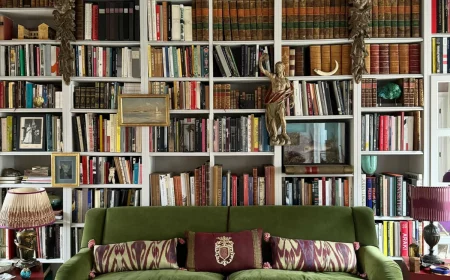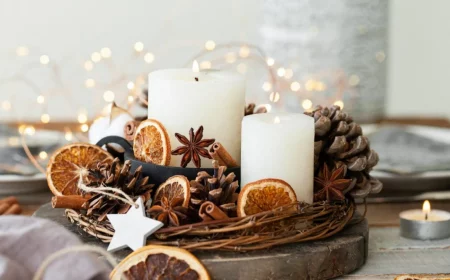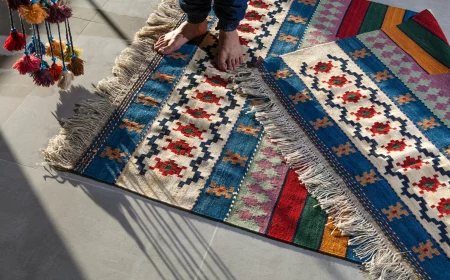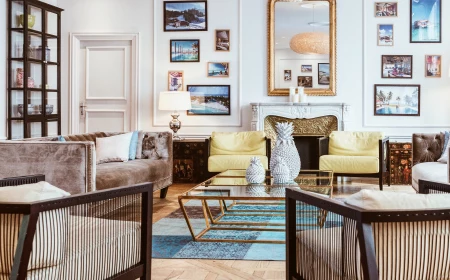The Real Secret to a Cozy Home (Hint: It’s Not Just More Blankets)
I’ve walked through more homes than I can count, from slick city apartments to rambling country houses. And over the years, I’ve noticed something funny about the word “cozy.” People think it just means piling up a bunch of soft stuff. But a home that feels genuinely, deeply comfortable? That’s not something you can buy in one trip to a home goods store.
In this article
It’s a feeling that’s carefully built, layer by layer. It’s about the way light falls in a room, the textures you touch, and even the sounds you don’t hear. The most welcoming homes I’ve been in get this right. They engage all the senses, not just your eyes. The air feels calm, the light is soft, and the little noises of the world seem to melt away. This doesn’t happen by accident. It’s about making smart choices, and honestly, it’s easier than you think. Let’s dig into how to build that sanctuary feeling in your own space.
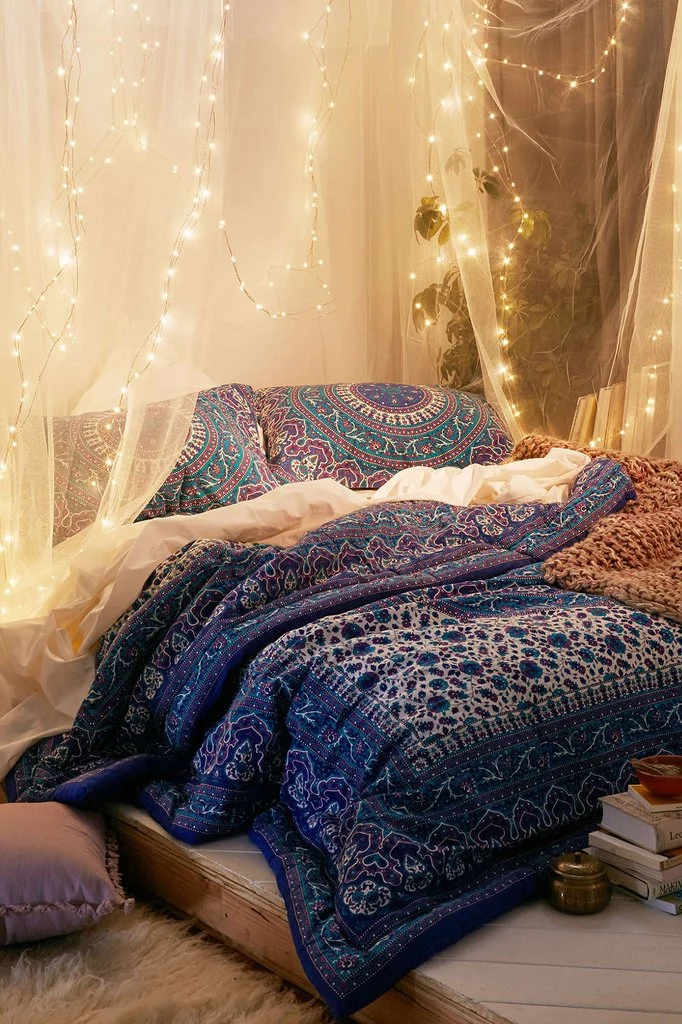
First Things First: Getting the Light Right
Before you even think about furniture or pillows, you need to become a master of your home’s light. It’s the most powerful tool you have. Light sets the mood, changes how colors look, and can make a room feel either huge or horribly cramped. Real comfort starts here.
The Magic of Warm Lighting
That cozy feeling we all crave is almost always tied to warm, gentle light—think candlelight or the glow from a fireplace. In the lighting world, this warmth is measured in Kelvin (K). For a truly comfortable vibe, you’ll want to look for bulbs in a specific range.
- 2200K – 2700K: This is the sweet spot. It gives off a warm, yellowish glow that feels incredibly relaxing and familiar. It’s perfect for living rooms, bedrooms, or any space where you want to unwind.
- 3000K: This is more of a soft, warm white. It has less yellow, so it feels a bit cleaner and brighter. I find this works great in kitchens and bathrooms, where you need to see what you’re doing but don’t want to feel like you’re in a hospital.
Okay, homework time. Go look at the main lamp in your living room. Find the bulb. What’s the Kelvin (K) number on it? If it’s over 3000K, that’s your first, easiest fix for a cozier space.
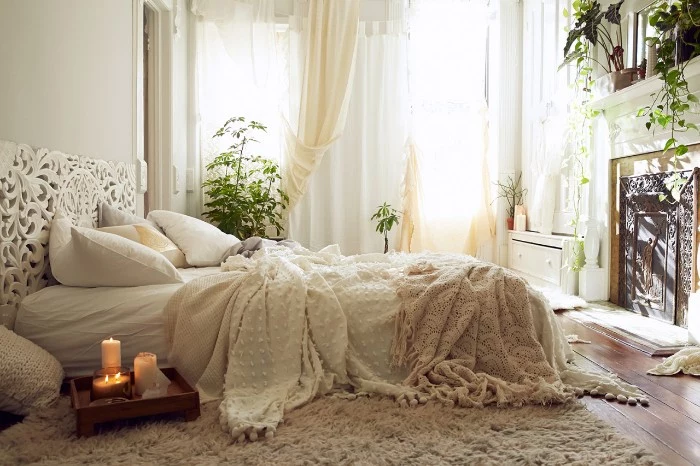
But wait, there’s one more crucial thing: the Color Rendering Index (CRI). It’s a scale from 0 to 100 that tells you how accurately a light source shows the true colors of things. I never, ever use a bulb with a CRI below 90 in a home. A low CRI can make your gorgeous new paint look sickly, and it won’t do your skin tone any favors either. It just creates a weird, unsettling feeling. High-CRI bulbs make everything look richer and more alive. You can find high-CRI LED bulbs from brands like Cree or Waveform Lighting at places like Home Depot or online specialty stores.
How the Pros Layer Light
A single, glaring overhead light is a one-way ticket to a flat, uninviting room. It creates harsh shadows and kills any sense of intimacy. Instead, think about lighting in three distinct layers:
- Ambient Light: This is your room’s general, all-over lighting. It might be a ceiling fixture or some recessed lights. The absolute key here is control. Always, always have this on a dimmer switch. Being able to dial down the brightness is step one for creating a mood. A heads-up: A basic dimmer switch costs about $25, and a handyman or electrician can usually pop one in in under an hour. It’s one of the highest-impact, lowest-cost upgrades you can make.
- Task Light: This is just focused light for doing stuff. Think of a reading lamp by your favorite chair, under-cabinet lights for chopping veggies, or a lamp on your desk. It creates these lovely little pools of light that feel personal and purposeful.
- Accent Light: This is the fun stuff. It’s light used to highlight things you love, like a small spotlight on a piece of art or an uplight tucked behind a big plant. It adds depth and makes the room feel more dynamic.
A great room uses all three. Imagine a living room with dimmable recessed lights (ambient), a cool floor lamp for reading (task), and a tiny spotlight aimed at the fireplace (accent). Suddenly, you have a flexible space that can go from bright and functional to moody and intimate in seconds.

What You Need to Know About Paint
Picking a paint color isn’t just about the shade; it’s about how that shade plays with light. On the back of most paint chips (or on the manufacturer’s website), you’ll find a number called the Light Reflectance Value, or LRV. It’s a scale from 0 (jet black) to 100 (pure white).
- High LRV (60+): These colors are like mirrors for light. They bounce it all around, making a room feel bigger and brighter. They’re a fantastic choice for small rooms or spaces that don’t get a lot of sun.
- Low LRV (below 20): These colors drink up light, creating a dark, dramatic, and very intimate vibe. A deep charcoal gray or a rich navy blue can turn a bedroom or a den into an incredible, protective-feeling cocoon.
I learned this lesson the hard way a while back. We were designing a library with a beautiful, deep brown paint. But once it was on the walls, the room just felt… sad. The mistake? We had ignored the lighting plan. The room only had one central light fixture. The fix wasn’t repainting; it was layering. By adding a few well-placed floor and table lamps, the dark walls went from oppressive to rich and enveloping. Adding those lamps cost around $600, which was way cheaper than repainting, and it made all the difference. Dark walls need more light, not less!
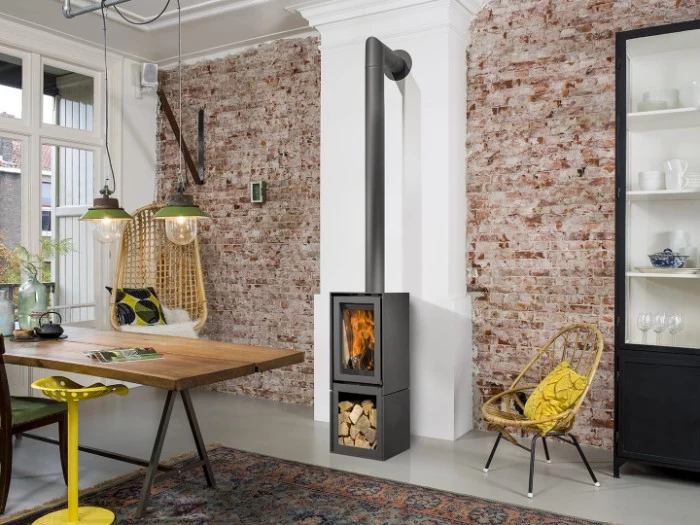
The Next Layer: Texture, Textiles, and Sound
Once you’ve got the light feeling right, it’s time to think about touch. Texture adds physical warmth, visual interest, and—a very overlooked element—it helps control sound.
Choosing Materials That Feel Good
Different materials do different jobs. Mixing them up is key.
- Wool: This is a true workhorse. A thick wool rug provides actual, measurable warmth. It’s also incredibly durable and a sound-absorption superstar, reducing echo and making a room feel quieter. A big wool rug can be a splurge, sometimes running $500 or more, but it’s an investment in real comfort.
- Cotton & Linen: These are your breathable, easy-going options. A chunky-knit cotton throw is perfect when you want comfort without overheating. And linen has this amazing, relaxed texture that just gets softer and better over time.
- Velvet & Bouclé: These are your textural power-hitters. Velvet has a deep pile that makes colors look incredibly rich, while bouclé, with its nubby loops, just begs to be touched. A bouclé accent chair or some velvet pillows can instantly make a room feel more luxe.
By the way, try to lean on natural fibers. Synthetics like polyester might feel soft at first, but they don’t breathe well and can lack the satisfying weight and drape that makes a textile feel truly high-quality.
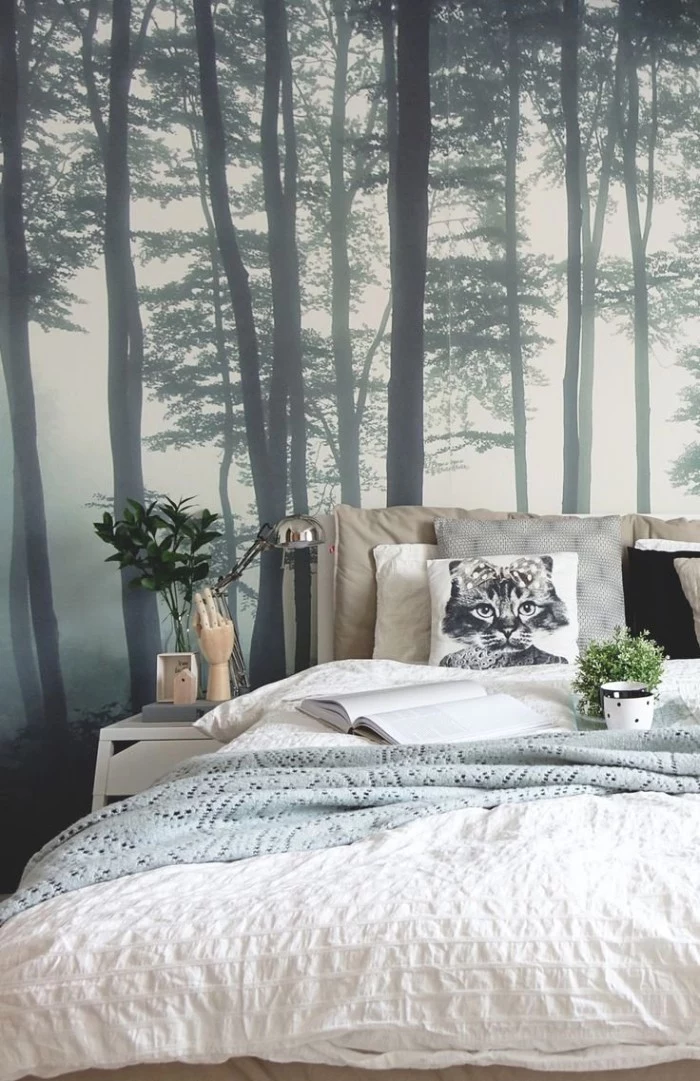
Let’s Talk Rugs (and How Not to Mess It Up)
A rug is not just a floor covering; it’s a tool that anchors your furniture and defines a space. And please, please, please get the size right. This is the most common mistake I see.
- For the Living Room: Your rug should be big enough for at least the front two legs of all your furniture (sofa, chairs) to sit on it comfortably. This visually pulls the whole seating area together. If you can fit all the legs on it, even better!
- For the Bedroom: The rug should stick out at least 18-24 inches from the sides of the bed. The goal is for your feet to hit something soft when you get up in the morning.
Quick tip for saving money: If a giant 9×12 wool rug isn’t in the budget, don’t sweat it. A great trick is to buy a large, inexpensive natural fiber rug, like a jute or sisal one, to cover the floor. Then, layer a smaller, more plush 5×8 rug on top. You get the proper scale and that luxurious feel underfoot without breaking the bank! And don’t forget a good quality rug pad ($30-$80). It adds cushion, stops slipping, and protects your floors. It’s not optional.
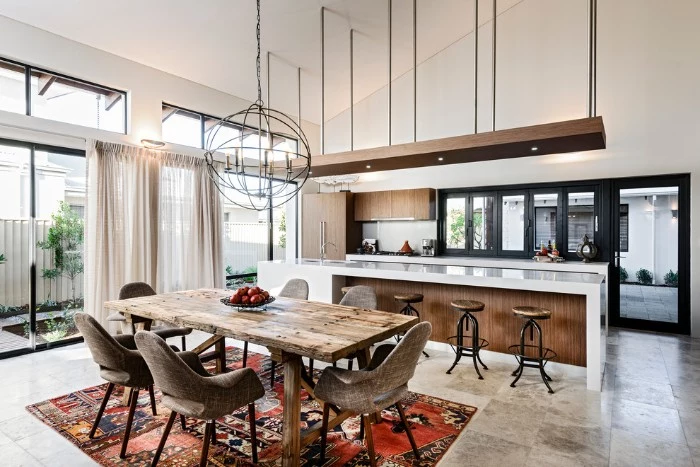
Wallpaper’s Secret Superpower
People usually think of wallpaper for its pattern, but I often use it for its texture. Things like grasscloth or cork wallpaper add a subtle, sophisticated layer of warmth. A grasscloth wall behind a headboard, for instance, looks amazing and also helps muffle sound, making a bedroom feel extra quiet and serene.
The Final Touch: Warmth, Scent, and Life
This last layer is all about tapping into our most primal senses. The warmth from a fire, the smell of something real, the presence of life—these are powerful signals to our brain that we’re safe and sound.
Choosing a Fireplace for Your Home (and Budget)
A fireplace is the ultimate cozy symbol, but they come with different price tags and installation needs.
- Wood-Burning: The classic choice. The radiant heat is amazing, but the reality is a major construction project. Installation involves a proper chimney and can easily run into thousands of dollars, plus the annual cost of professional chimney sweeping.
- Gas: A fantastic balance of ambiance and push-button convenience. They provide great heat, and modern direct-vent models are very safe. Installation by a certified pro is a must and usually starts around $4,000 and up, depending on the model and venting needs. Maintenance is lower than wood but you’ll still want regular check-ups.
- Electric: Honestly, these have gotten so good. This is your easiest and most budget-friendly option by far. You can find a great-looking one for $200-$600, and installation is often as simple as plugging it into the wall. Maintenance? Pretty much zero.
A quick story on safety: On one project, we discovered the previous owner had put a gas insert into an old wood-burning fireplace without a proper liner. The gas exhaust had been slowly eating away at the chimney from the inside. It was a huge fire hazard and a costly fix. Whatever you choose, please have it installed by a licensed and insured professional.
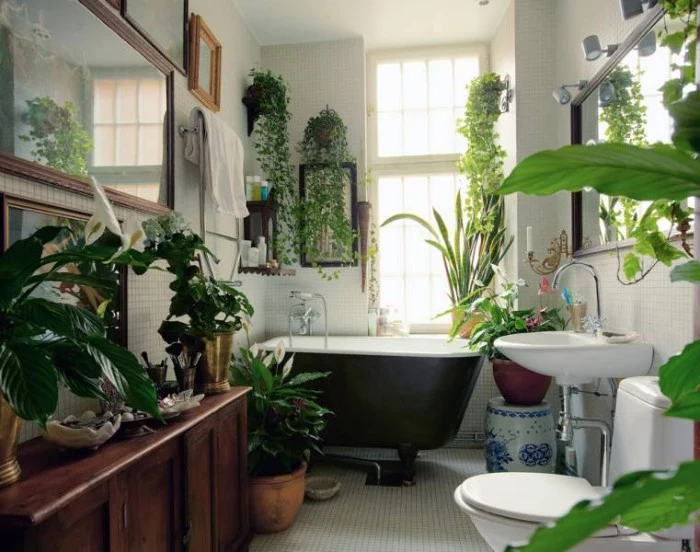
The Power of a Signature Scent
Scent is wired directly to memory and emotion. Ditch the synthetic plug-ins, which can be harsh and overpowering. Instead, build a natural scent for your home.
- Diffuse This: An ultrasonic diffuser with a few drops of high-quality essential oil (like cedarwood or lavender) is subtle and therapeutic.
- My Go-To Trick: My absolute favorite, and it costs pennies, is a simmer pot. Just toss a few orange peels, a couple of cinnamon sticks, and a teaspoon of whole cloves into a small pot of water on the stove. Let it gently simmer on low. Your house will smell incredible, welcoming, and completely natural.
Bring the Outside In
Humans have a built-in need to connect with nature, and bringing plants indoors is about more than just decoration. It satisfies that need.
But don’t just grab any plant! Match the plant to your light. Snake plants and ZZ plants are famous for handling low light, while a Fiddle Leaf Fig will want a brighter spot. And instead of dotting single plants around, try grouping them in clusters of three or five of varying heights and textures for a more natural look.
CRITICAL safety note for pet owners: So many common houseplants, like lilies and pothos, are toxic to cats and dogs. Before you buy anything, please do a quick search for the “ASPCA toxic plant list.” It could save you a lot of heartache and a huge vet bill.
Bringing It All Home
See? Creating a home that genuinely feels good is a thoughtful process, not a frantic shopping spree. It’s about being intentional. Start by mastering your light—make it warm and layer it. Then, bring in textures that feel wonderful and absorb sound. Finally, add those soul-deep elements: a flicker of warmth, a natural scent, and a bit of green life.
It takes a bit more thought, but the payoff is huge. You’ll end up with more than just a decorated space. You’ll have a home that actively nurtures you. A place that doesn’t just look good, but feels right. And that’s a feeling worth creating.
Inspirational Gallery
The invisible layer of comfort: Scent. A home’s signature fragrance can be the most powerful element in creating a mood. Avoid synthetic, overpowering sprays and opt for a subtle, natural scent diffuser. Earthy oils like cedarwood, sandalwood, or vetiver from brands like Muji or Vitruvi provide a grounding, warm ambiance that feels like a welcoming hug.
- Dampens harsh echoes from hard surfaces.
- Adds a crucial layer of physical and visual softness.
- Muffles ambient noise from outside or other rooms.
The secret? It’s not just about floors. A large, woven wall hanging or a thick tapestry can have the same sound-absorbing effect as a rug, turning a stark, echoing wall into a feature of acoustic comfort.
Studies in environmental psychology show that visual exposure to natural elements, like wood and plants, can significantly reduce stress and improve focus.
This is the principle of biophilia in action. Incorporating these textures is a shortcut to a calmer state of mind. Think beyond a single fiddle-leaf fig; consider an oak coffee table, a slate serving board, a wool throw, or even a simple bowl of river stones. These elements ground our indoor spaces with an organic, soothing energy.
How do you display personal treasures without creating clutter?
The key is intentional curation. Instead of scattering items, group them by theme or color on a dedicated surface like a console table or a floating shelf. Mix different heights and shapes—a stack of books, a small vase with a single stem, a framed photo—to create a pleasing vignette. This transforms personal effects from ‘stuff’ into a meaningful story.
Notice the trend of soft, curved furniture? It’s more than just aesthetics. Sofas with rounded arms, circular coffee tables, and arched mirrors subconsciously signal safety and welcome. Sharp angles can feel formal or even aggressive, while curves invite you to relax and soften the lines of a room, making it instantly more approachable and cocoon-like.
For ultimate tactile comfort, think in layers.
- Linen: Offers a relaxed, breathable texture that gets softer with every wash. It creates an effortless, airy comfort perfect for a lived-in, natural aesthetic.
- Velvet: Provides deep, plush softness and rich color. It’s ideal for adding a touch of luxury and creating a warm, enveloping nook for colder months.
- Bouclé: This looped, nubby fabric, famously used on Saarinen’s Womb Chair, invites touch and adds incredible visual and physical texture.
The dimmer switch is perhaps the most underrated tool for changing the feeling of a space.
It’s the single most impactful (and often inexpensive) electrical upgrade you can make. A dimmer allows you to tailor light intensity to the time of day or the mood, giving you complete control. Installing a smart dimmer system, like Lutron Caséta, lets you schedule a ‘wind-down’ scene for your evenings, effortlessly shifting the atmosphere of your entire home.
One of the biggest enemies of ‘cozy’ is a room that feels too sterile or perfectly staged. To make your space feel genuinely lived-in and authentic, intentionally introduce a little imperfection. Drape a throw blanket slightly askew, leave a favorite art book open on the coffee table, or display a hand-thrown ceramic mug. These small touches signal that the space is for living, not just for looking at.
Wool Rugs: Their natural fibers are excellent at absorbing sound, adding warmth underfoot, and they are incredibly durable, aging gracefully over time.
Jute or Sisal Rugs: These offer incredible texture and a natural, organic look at a lower price point, but they provide less softness and sound dampening.
For a perfect blend of comfort and durability, consider a high-pile wool rug in living areas and bedrooms.
The Danish concept of *hygge* isn’t something you can buy, but rather a feeling you cultivate. It’s the sense of contentment and well-being you get from enjoying the simple things. Think less about a perfect showroom and more about creating spaces that encourage connection and small pleasures, like sharing a pot of tea or reading by a warm light. Your home should be a backdrop for these moments.


